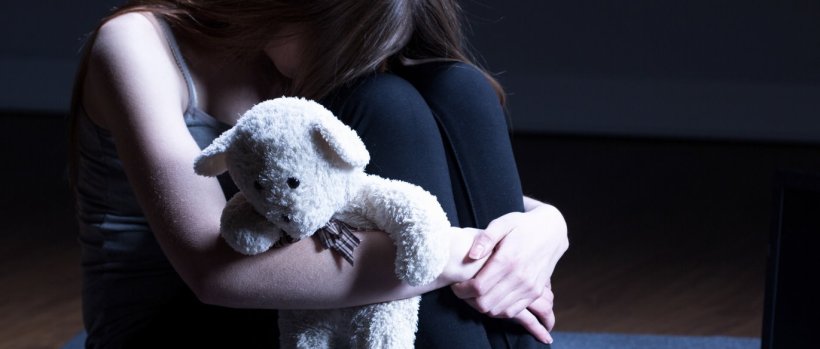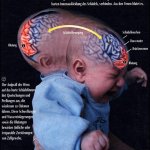
Image source: Adobe Stock/Photographee.eu
News • Alarming survey results
Child neglect or abuse: Hospital EDs report lack of policy and strategies
In a survey of emergency department staff from across Europe, only around half said their hospital has a policy in place to help staff identify children who are being neglected or abused.
The research, presented at the European Emergency Medicine Congress, also shows that hospitals with such a policy are more likely to use strategies that are known to be effective in identifying children who are maltreated, including screening tools and staff training.
Children who sustain injuries due to abuse are likely to present at an emergency department and previous research shows that staff can play an important part in identifying these children
Féline Hoedeman
The study was presented by Féline Hoedeman, a PhD and medical student at the Erasmus MC Sophia Children’s Hospital in Rotterdam, The Netherlands. She said: “Abuse and neglect have devastating effects on children, families and society, but they can be very difficult to spot. Children who sustain injuries due to abuse are likely to present at an emergency department and previous research shows that staff can play an important part in identifying these children, especially if they have the right training, tools and resources.”
In collaboration with the Dutch Augeo Foundation, the European Society for Emergency Medicine (EUSEM), Research in European Paediatric Emergency Medicine (REPEM) network and the European Society of Emergency Nursing (EuSEN), the researchers from the Erasmus MC Sophia Children’s Hospital conducted a survey of healthcare professionals working in European emergency departments. The responses came from staff at 148 hospitals in 29 countries: Austria, Belgium, Bulgaria, Croatia, Cyprus, Czech Republic, Denmark, Estonia, France, Germany, Greece, Hungary, Iceland, Ireland, Italy, Kosovo, Latvia, Lithuania, Malta, The Netherlands, Norway, Poland, Romania, Slovenia, Spain, Sweden, Switzerland, Turkey and the United Kingdom.
Recommended article

Artikel • Kinderradiologie
Wenn hinter dem "Sturz von der Treppe" mehr steckt
Bei der Aufdeckung einer Kindesmisshandlung kommt der Kinderradiologie eine Schlüsselrolle zu. Ob die Verletzung eines Kindes durch Unfall oder Gewalt entstanden ist, kann meist erst mit Hilfe von Sonographie, Röntgen, Magnetresonanz- bzw. Computertomografie beurteilt werden.
Only 51% of respondents said their hospital had a standardised child maltreatment policy. Twenty-four percent said they did not have such a policy. The remaining 25% either did not know or did not say whether they had a policy. Those who said there was a policy were also more likely to report that their hospital had a child maltreatment screening tool (52% compared to 2% in hospitals without a policy), training on identifying maltreated children (63% compared with 30%), a child abuse team (73% compared with 27%) and a child maltreatment policy officer (51% compared to 20%). However, only 28% with a policy said that their hospital used all four of these strategies.
The researchers caution that the responses came from individual professionals and so are not representative of all hospital staff. Ms Hoedeman said: “Our study suggests that there are some hospitals where the right action is being taken to protect children. However, it also suggests that there are far too many hospitals where policy on child abuse and neglect is not in place or staff do not know the policy is there. Where that’s the case, staff are less likely to have the tools and knowledge they need and may be missing opportunities to help vulnerable children.”
Although regulations and legal systems differ between European countries, the core components of a child maltreatment hospital policy should always be in place and can be adapted to different hospitals
Youri Yordanov
The researchers plan to develop a toolkit, consisting of a hospital policy, training and a screening tool, to help identify children being neglected or abused. They have just completed a follow-up survey to investigate any factors that could help or hinder implementation of the toolkit. Professor Youri Yordanov from the St Antoine Hospital emergency department, APHP Paris, France, is Chair of the EUSEM 2022 abstract committee and was not involved in the research. He says: “We know that having protocols and structured processes in hospitals can reduce medical errors and benefit patients. This study affirms that having a policy can support emergency department staff to spot children who are at risk. Although regulations and legal systems differ between European countries, the core components of a child maltreatment hospital policy should always be in place and can be adapted to different hospitals. We are starting to recognise that there is a lot of variability between hospitals when it comes to recognising child abuse and neglect and that’s something we need to urgently address.”
Source: European Society for Emergency Medicine
20.10.2022











